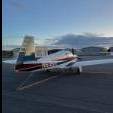-
Posts
449 -
Joined
-
Last visited
-
Days Won
2
AndreiC last won the day on June 3 2024
AndreiC had the most liked content!

AndreiC replied to Hank's topic in Vintage Mooneys (pre-J models)

AndreiC replied to AndreiC's topic in General Mooney Talk

AndreiC replied to MikeOH's topic in Avionics/Panel Discussion

AndreiC replied to MikeOH's topic in Avionics/Panel Discussion

AndreiC replied to hazek's topic in General Mooney Talk

AndreiC replied to AJ88V's topic in Miscellaneous Aviation Talk

AndreiC replied to AJ88V's topic in Miscellaneous Aviation Talk

AndreiC replied to AJ88V's topic in Miscellaneous Aviation Talk
We have placed cookies on your device to help make this website better. You can adjust your cookie settings, otherwise we'll assume you're okay to continue.